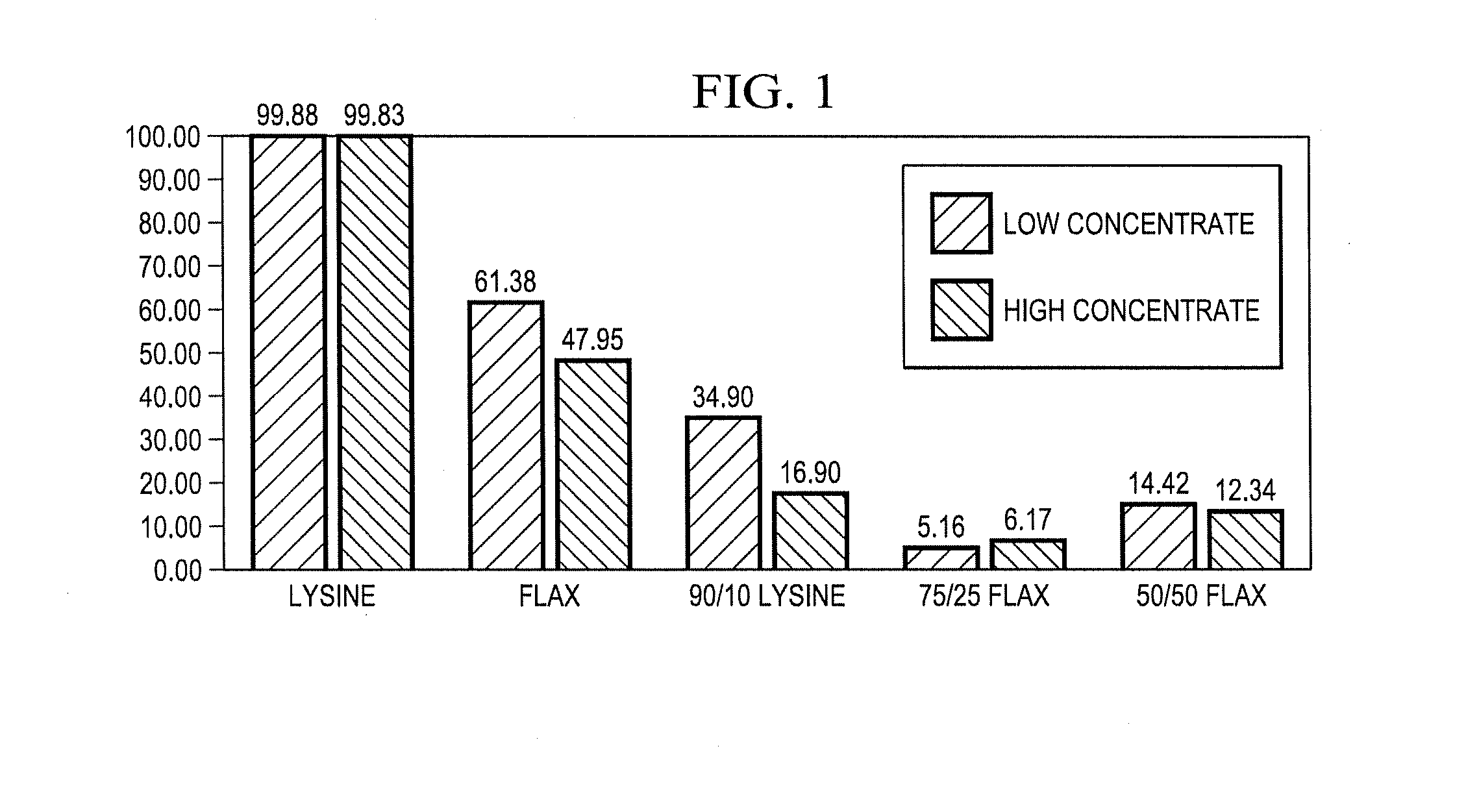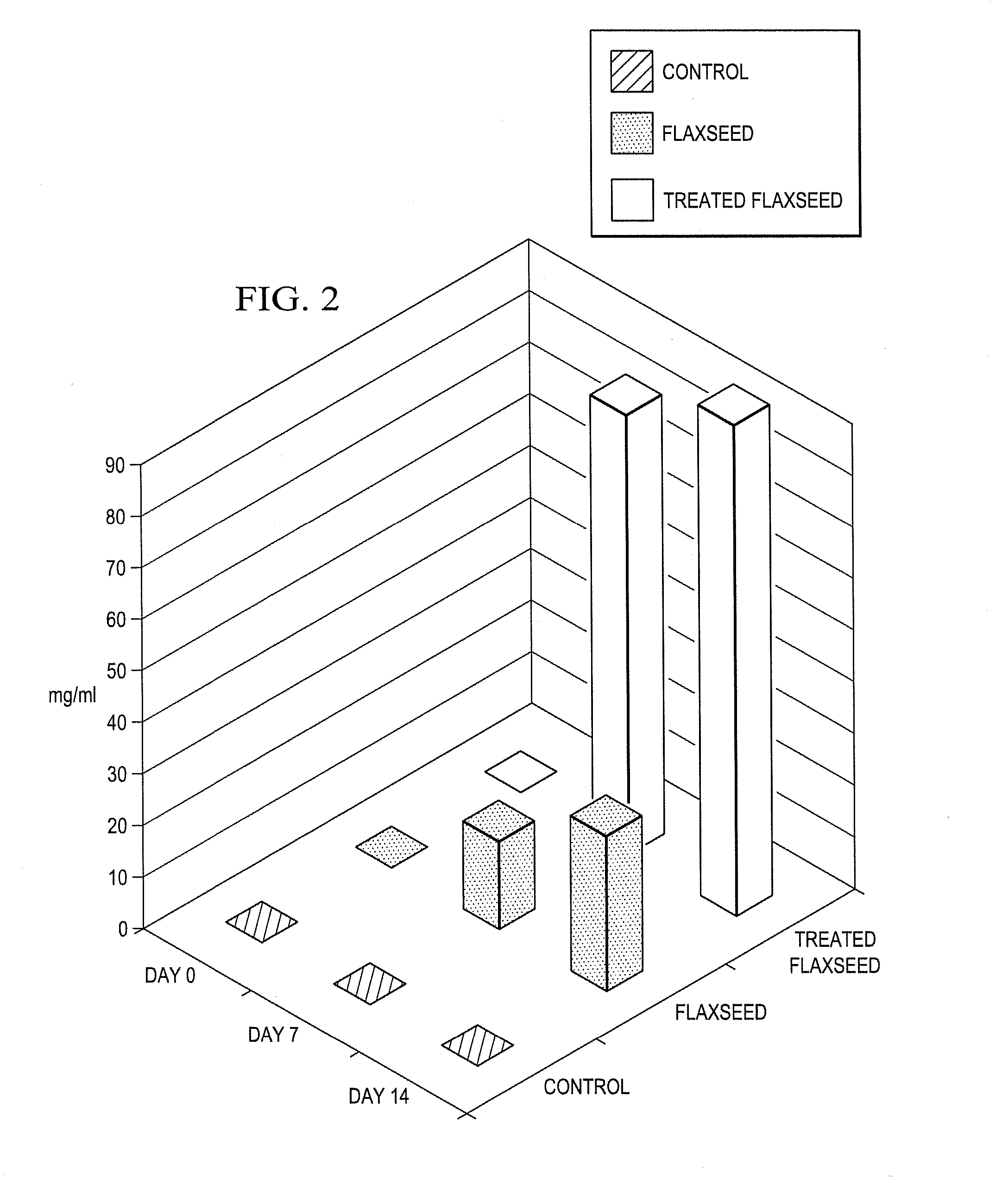Method and Composition for Increasing the Proportion of Dietary Ingredients That Are Resistant to Degradation By Ruminal Microorganisms
a technology of dietary ingredients and resistance to degradation, applied in the field of ruminant feedstocks, can solve the problems of microbial degradation of dietary ingredients, protein, amino acids, and certain vitamins, and achieve the effect of increasing the proportion of those compounds
- Summary
- Abstract
- Description
- Claims
- Application Information
AI Technical Summary
Benefits of technology
Problems solved by technology
Method used
Image
Examples
Embodiment Construction
[0014]The embodiments herein and the various features and advantageous details thereof are explained more fully with reference to the non-limiting embodiments that are detailed in the following description. Descriptions of well-known components and processes and manufacturing techniques are omitted so as to not unnecessarily obscure the embodiments herein. The examples used herein are intended merely to facilitate an understanding of ways in which the invention herein may be practiced and to further enable those of skill in the art to practice the embodiments herein. Accordingly, the examples should not be construed as limiting the scope of the claimed invention.
[0015]In the present invention, “animal feed ingredients” that are otherwise susceptible to degradation by ruminal microorganisms are combined with calcitic and / or dolomitic mineral hydrates generically called hydrated lime as a binder, and typically with a blending aid, such as water. The mixture is then processed through a...
PUM
 Login to View More
Login to View More Abstract
Description
Claims
Application Information
 Login to View More
Login to View More - R&D Engineer
- R&D Manager
- IP Professional
- Industry Leading Data Capabilities
- Powerful AI technology
- Patent DNA Extraction
Browse by: Latest US Patents, China's latest patents, Technical Efficacy Thesaurus, Application Domain, Technology Topic, Popular Technical Reports.
© 2024 PatSnap. All rights reserved.Legal|Privacy policy|Modern Slavery Act Transparency Statement|Sitemap|About US| Contact US: help@patsnap.com









